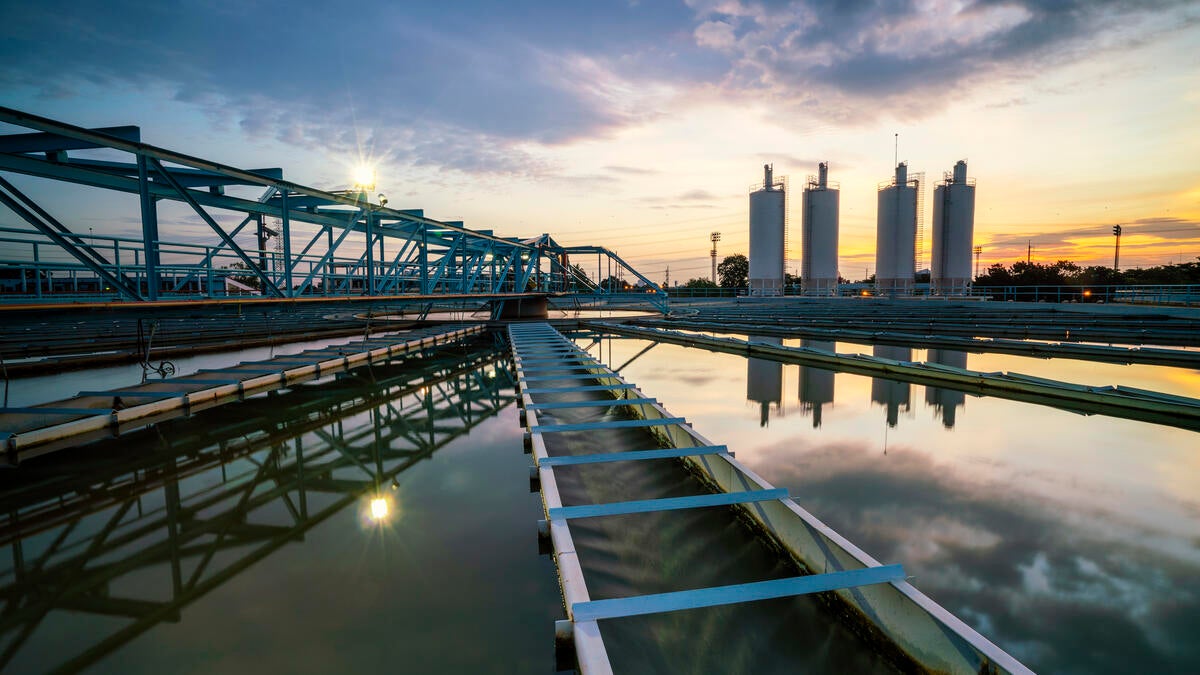ASU taps water expert to head up new research and education initiative

Photo courtesy iStock/Getty Images
Almost three-fourths of our planet is covered by water and yet secure drinking, bathing and agricultural supplies have been stressed to the point where more than 2 billion don’t have adequate access.
In Arizona, farmers are receiving major allocation cuts and switching crops, consumers are paying more for fresh fruit and produce, and the state’s drought status is troubling.
The future of water is radically changing in the Copper State and across the world, which is why Arizona State University has announced its latest research and educational endeavor: the Global Futures Water Institute at the Julie Ann Wrigley Global Futures Laboratory.
Upmanu Lall has been named as the institute’s inaugural director. A professor in the School of Complex Adaptive Systems within the College of Global Futures, he also developed and led several other water and flood initiatives at another major university.
In 2021, Reuters included Lall in the “Hot List of the world’s 1,000 top climate scientists.”
The Global Futures Water Institute is a new international center for scholarship and action designed to predict and address water challenges from community to international scale. Drawing from existing academic capacity across ASU, the institute will develop educational, research and communication projects that benefit Arizona, the region, the nation and the global community.
ASU News spoke to Lall about his new appointment, which will formally be announced on World Water Day at the Walton Center for Planetary Health on March 22.
Editor's note: Answers have been edited for length and clarity.
Question: Congratulations on your appointment as the inaugural director of the Global Futures Water Institute. Why this institute now?
Answer: Climate change has exposed the centrality of water to almost all climate-induced hazards — floods, droughts, wildfires and storms. The growing planetary population and the associated production of goods and economic activity has amplified the competition for food, energy, minerals, land and water. As a result, water is being depleted from aquifers; rivers and oceans are polluted, affecting the viability of global and local economies and livelihoods. Dire consequences are predicted by many — mass migrations following famines or property loss, increasing financial inequity, increasing social burden, global supply chain disruptions and pandemics.
Our hypothesis with setting up the institute is that solving water is central to solving climate and essential as an underpinning strategy for social dynamics across all sectors of human activity. Strategic, collaborative thinking and action are needed to leverage emerging technologies and data analytic tools to provide an array of benefits across the human enterprise. This is what the new institute will do while leveraging the contributions of faculty across ASU and other universities and organizations.
Q: What do you envision for the institute?
A: The goal is to bring existing water-related initiatives at ASU under one umbrella, both for education and training programs and for strategic research. The fabulous Arizona Water Innovation Initiative marks the start of a coherent strategy to solve a critical problem. We need to scale this kind of enterprise across world.
Q: How do you see ASU emerging as a global leader in this field?
A: ASU has excellent strength in social sciences and sustainability, in water technology innovation, in hydrologic modeling and in infrastructure systems. It has been successful in getting a large regional Innovation Engine project. ... There is a strong history of work through the Decision Theater and Complex Adaptive Systems that is integrative and can look at novel ways of approaching planning and operational processes in situations where future scenarios and stakeholder preferences/values are unclear or varying. These are all ingredients that need to be leveraged to breed a new chapter for water futures and their management recognizing the diversity of settings across the world.
World Water Day celebration
Join the Global Futures Laboratory for the launch of the Global Futures Water Institute.
Details:
9 a.m.–5:30 p.m. Friday, March 22
Walton Center for Planetary Health
Tempe campus
Free
Our plan to do this considers three nested scales — building a Global Water Collaboratory, an America’s Water Consortium and a Colorado River basin partnership. Each of these groups will include university, corporate, finance, government, NGO and activist groups as partners to work together to identify, analyze and solve water problems across the world. The strategy is to link researchers to those defining the needs or questions, and to implementers and financiers so that we can develop verticals and laterals to achieve ASU’s mission of making a real difference in the world.
Q: Arizona feels like it could be ground zero for a water crisis. How is this state able to be a model for global water-crisis issues, and how will this institute help at the local/regional level?
A: I would merely flip this question. We face aridity and water scarcity challenges across the world that are being aggravated by rapid population and economic growth, just as in Arizona, and a changing climate makes the viability of current water infrastructure and use strategies challenging to sustain. If we look from a global lens and see how other countries and locations are trying to manage the same exigencies, we enrich the options and ideas available for Arizona. Obviously, the reverse also works, and this is the crux of the strategy for the institute.
The Colorado Basin partnership would be critical to address water issues for Arizona in any case — building a collaborative strategy across the basin could help us get support to build a national center for water solutions at ASU, which would in turn put Arizona at the center of the collective efforts to solve water in the West.
Q: Many people would rather let our leaders and governments deal with this issue, but what can the populace do on their end regarding conservation and awareness?
A: The populace ultimately drives the choices — people express their preferences through what they buy, how they manage their own use and what they vote for.
Agriculture is the largest water user, and much of agriculture’s water use goes towards meat and dairy production. A vegan/vegetarian diet goes a long way towards reducing individual water footprints.
Treating wastewater and reusing it requires a fraction of the energy associated with desalination and piping it to Phoenix. Acceptance of such an option changes the game, and on the side of the researchers, puts the burden to come up with sensors to assure that the tap water quality is good, thus improving acceptance.
Lawns are a luxury use, and if you are concerned about water, either pay extra for your lawn use or find an alternate solution. All these are things that are routinely said, but perhaps the most important thing is to convey sentiments about regional growth, water use and supply options to the politicians.
More Environment and sustainability

A 6-month road repair that only takes 10 days, at a fraction of the cost? It's reality, thanks to ASU concrete research
While Arizona’s infrastructure may be younger than its East Coast counterparts, the effects of aging in a desert climate have begun to take a toll on its roads, bridges and railways. Repairs and…

Mapping DNA of over 1 million species could lead to new medicines, other solutions to human problems
Valuable secrets await discovery in the DNA of Earth’s millions of species, most of them only sketchily understood. Waiting to be revealed in the diversity of life’s genetic material are targets for…

From road coatings to a sweating manikin, these ASU research projects are helping Arizonans keep their cool
The heat isn’t going away. And neither are sprawling desert cities like the metro Phoenix area.With new summer records being set nearly every year — 2024 was the warmest year on record for…
